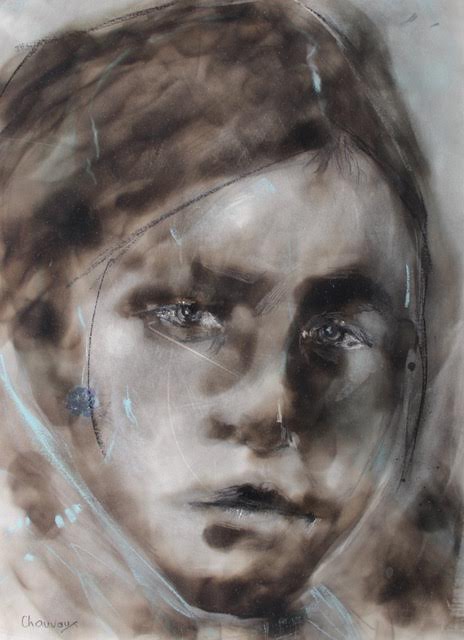ART REVIEW: DOMINIQUE CHAVAUX
Apart from being a source of aesthetic pleasure, art is also a medium through which artists convey important messages, social commentaries and critiques. Cradled within the aesthetic value of art are symbols, allegories and various depictions the artists use, overtly or covertly to expose or ridicule human foibles, vanity, hypocrisy or social and political injustices. Dominique Chauvaux is one of the artists who stretches the boundaries of the art form to alert us to a tear in the tapestry of our collective consciousness and social life, to the disappearance and unresolved murders of a number of indigenous Canadian women.
Chauvaux’ arresting candle flame paintings capture both the beauty and the terror of human existence. With masterful strokes and striking charcoal effects, she portrays faces whose gazes bore and burrow deeply into the spectator’s heart. One cannot behold these portrayals without feeling a deep stirring in the soul, which serves as an art-clad reminder of the violently extinguished dreams behind the faces.
The soot-like smudges produced by the magic of the candle flame create lasting impressions and engage the spectator into the interpretative dance of meaning. The eyes of the depicted individuals exude a spectrum of emotions immortalized by the artist’s touch. They bespeak sadness, astonishment, defiance and puzzlement compelling attention and calling for action. Even though the hand of time on the clock of justice moves achingly slowly, the faces of the victims etch themselves into our consciousness nudging us gently to guard their identity and their memory against our collective amnesia.
The contours themselves speak a language of their own, allowing those who engage with these unique works of art to unravel the story in search of closure. In the hands of Chavaux, the candle flame turns into a narrator etching each individual story into the haunting gaze of those we have lost so prematurely.
Chavaux’s intricate technique coupled with the forget-me-not message strikes a powerful chord with everyone engaging with her art. Symbolically, the art produced by the candle flame is the eternal fire of a painful memory the society needs to keep stoked, for we owe it to the women we lost.
About the author:
As far back as she can remember, Jana Vasilj-Begovic has been fascinated by storytelling. Her love of reading and writing propelled her toward studies of languages and literature resulting in B.A. degrees in English and German Languages and Literature, an M.A. Degree in Literary Criticism, as well as a B.Ed. Degree in English and Dramatic Arts.







